In today’s digital world, words can be as powerful as weapons. The media has become a key part of modern conflicts. One strong example is how Israel uses media to shape the story against Palestine. This is done through social media posts, fake news, and planned messages. These tactics aim to change how people see the conflict and hide the full truth.
Social media platforms often spread one-sided stories. Images and videos are taken out of context. False reports are shared quickly, especially during times of war. Bots or fake accounts boost some of these posts. Others use emotional content to gain attention and support.
At the same time, voices from Palestine are often blocked or ignored. This makes it harder for the world to hear both sides. This kind of media control is not just biased, it’s a tool of war. It shapes global opinion and affects real lives.
You May Like To Read: Rethinking Strategic Depth: From Kabul to Gwadar
The Role of AI and Bot Campaigns
According to reporting, the Israeli government and affiliated tech firms have deployed AI-powered bots and disinformation campaigns to flood online discourse with emotionally charged, false content. These posts aimed to dehumanize Palestinians and justify military actions. An investigative piece in The Intercept notes the use of these tools to spread false or unverifiable claims widely.
Another analysis by al-Shabaka remarks that Israeli state-backed propaganda has been crucial in shaping international perceptions by casting Palestinian resistance groups as terrorists hiding behind civilians.
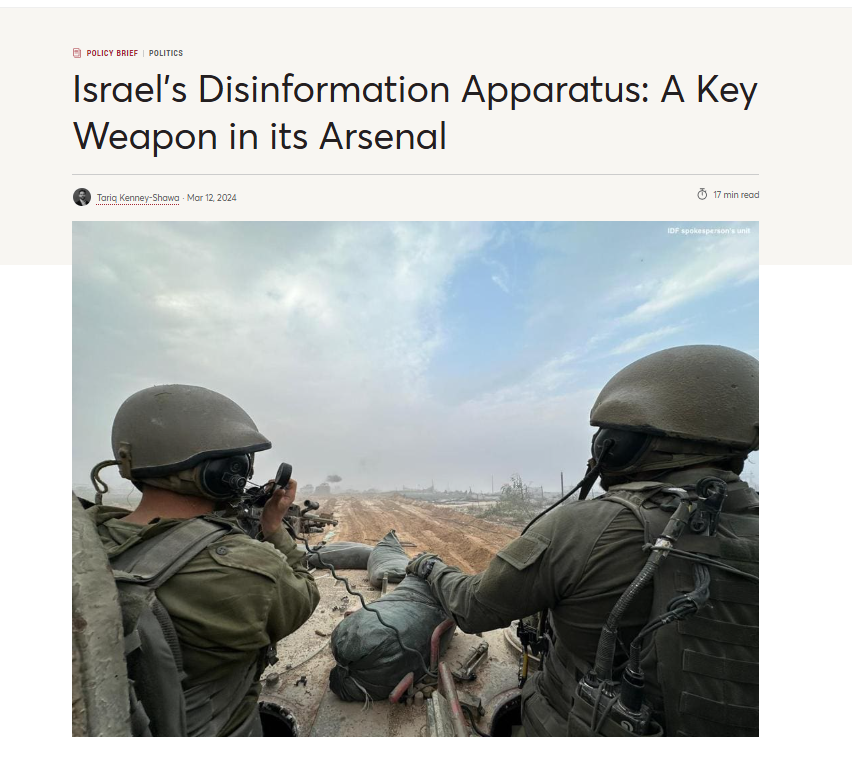
Image Credit: Al Shahbaka
Discrediting Palestinian Journalists
A recent investigation revealed a troubling fact: the Israeli military set up a unit known as the “legitimization cell.” Its goal was not security. Instead, it aimed to smear Gaza-based journalists. The unit did this by falsely linking these reporters to Hamas, making them look like militants rather than media workers.
This was not an isolated effort. It was part of a broader push to undermine Palestinian media credibility. The strategy used manipulated information to weaken public support for Palestinian voices. Journalists in Gaza work in the most dangerous conditions in the world. By branding them as militants, the unit sought to make attacks on these reporters appear justified.

Image Credit: The Guardian
Strategic Use of Social Platforms
Social media platforms like TikTok, Instagram, and X serve as digital battlegrounds. Israel’s military press officers, such as the 22-year-old Masha Michelson, have used these platforms to publicize military operations, aiming to justify actions and shape public sentiment. Still, many narratives struggle against powerful visuals from Gaza, which dominate global attention.
‘Hamas has to pay!’ Lieutenant Masha Michelson, Deputy Head of the Israeli Defense Force Press Desk called the attacks on her country ‘barbarism, and the IDF will answer severely’ in response to Hamas’s attack. pic.twitter.com/dlntMB8S2C
— CGTN Europe Breaking News (@CGTNEuropebreak) October 11, 2023
Thank you Masha Michelson for reporting the facts from Gaza to us so far. pic.twitter.com/VeYxSkVPCR
— Ersin 📰 Gözde (@grammargozde) January 21, 2025
Rumor and Disinformation
One powerful example is the viral rumor that “40 decapitated babies” were found at Kfar Aza. The claim stirred widespread outrage, but Israeli authorities later debunked it.
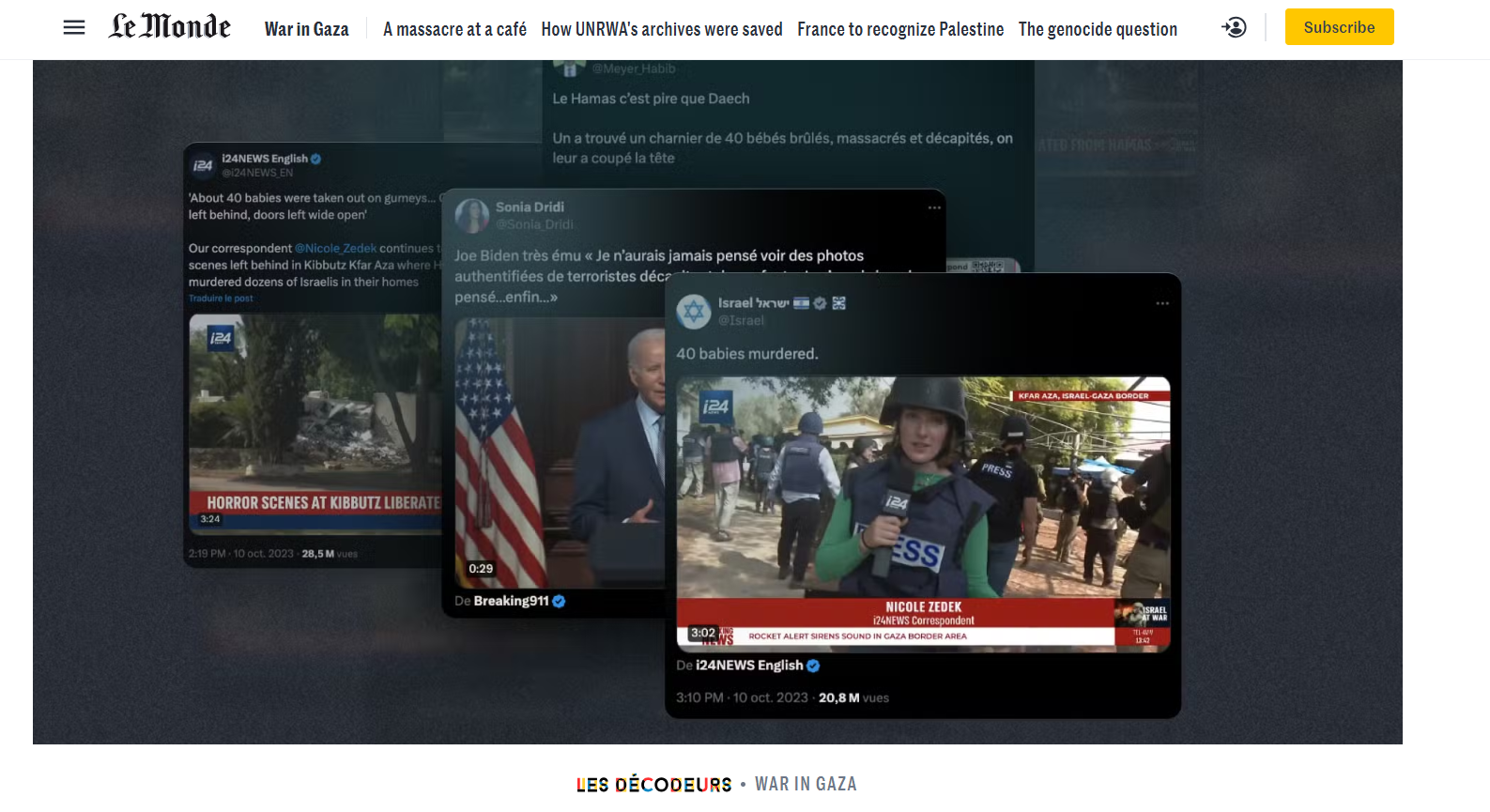
Image Credit: Le Monde
Similarly, two false allegations of extreme sexual violence circulated after October 7. These were later retracted after being shown to be inaccurate.
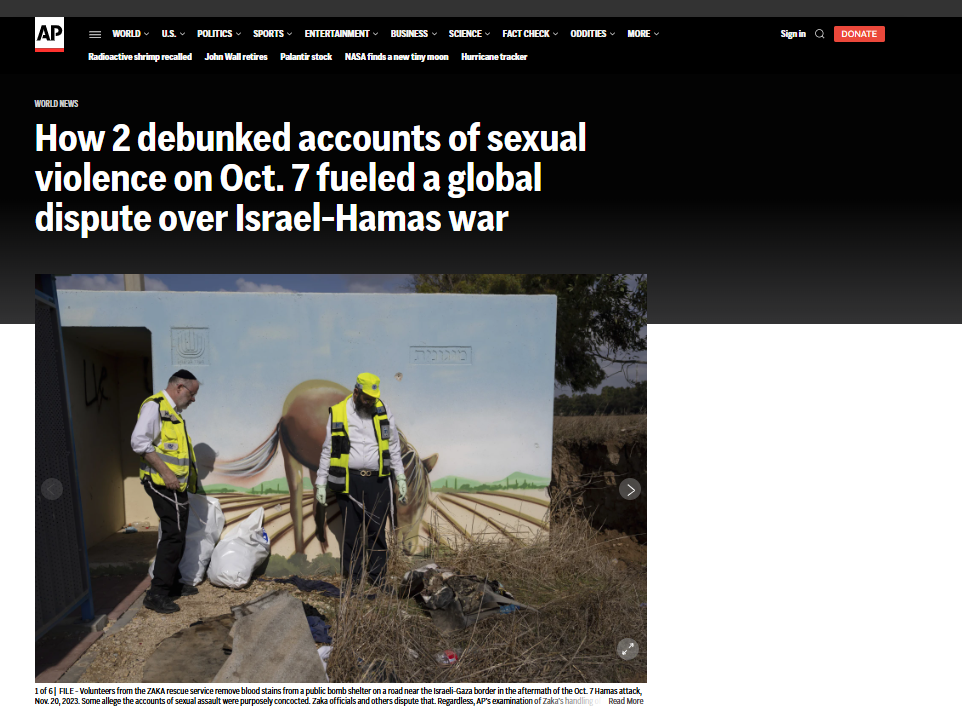
Image Credit: Ap News
Organized Online Campaigning: Act. IL
During the war, a social networking app called Act.IL emerged. Developed by the IDC Herzliya and funded by pro-Israel groups, the app guided users with daily “missions”—liking and sharing pro-Israel content and reporting critical posts. It functioned like a virtual media operations room.
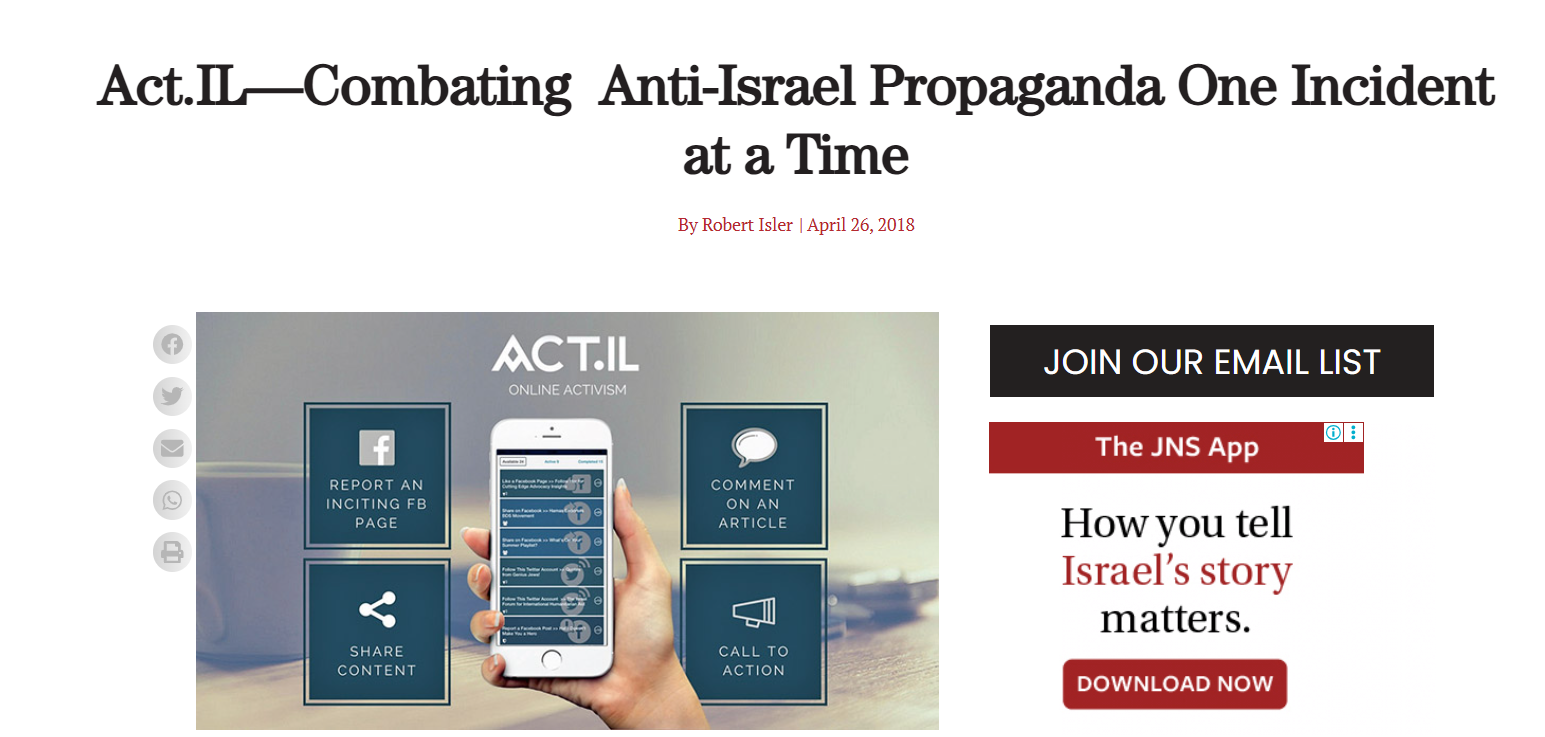
Image Credit: Jewish Link
Framing Narratives: “Pallywood” & Public Diplomacy
A persistent narrative is “Pallywood,” a term accusing Palestinians of staging scenes of suffering. This label is often used to discredit Palestinian video evidence, such as civilian footage of violence in Gaza. One Al Jazeera journalist was falsely portrayed as a “crisis actor,” only for the claim to be later debunked.
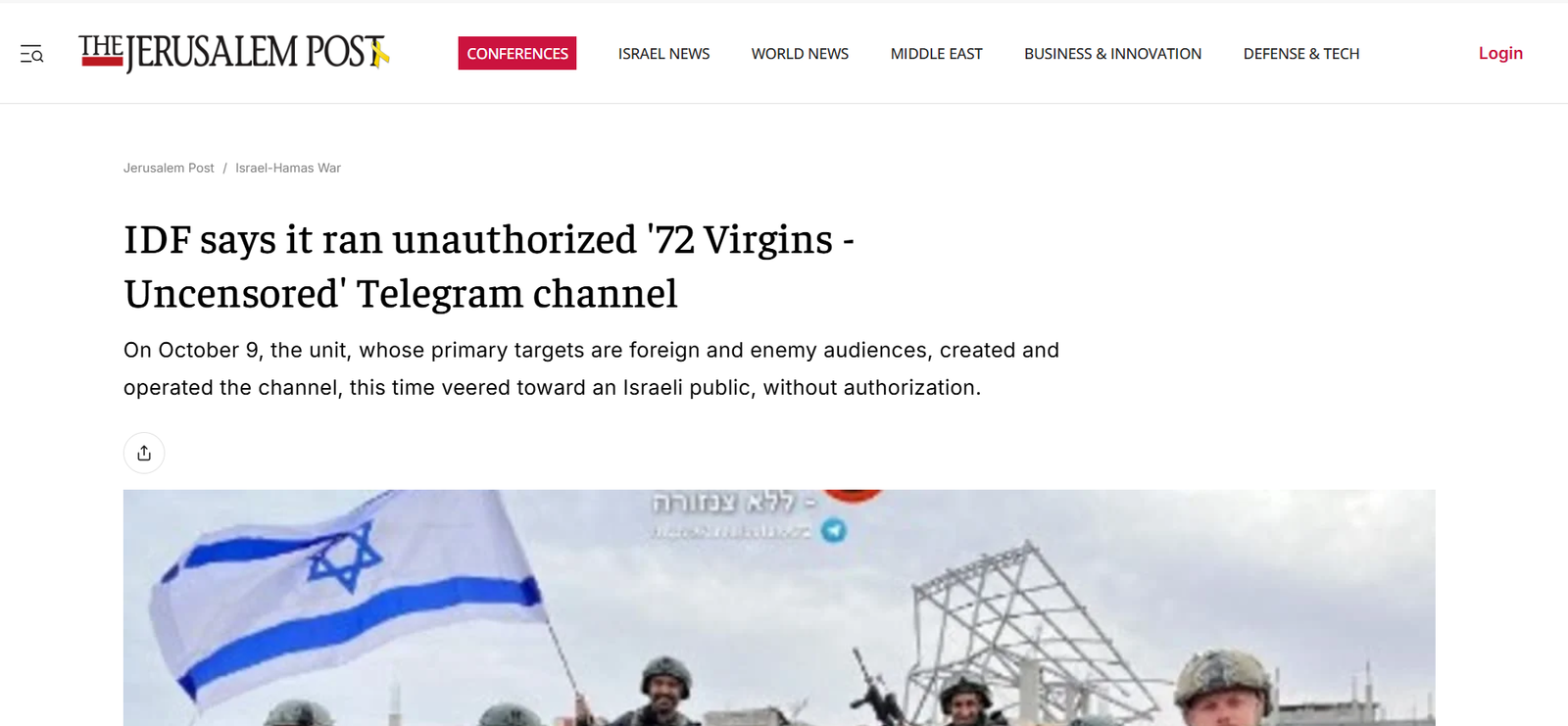
Image Credit: The Jerusalem Post
Another tool is Israel’s public diplomacy push. One example is the “72 Virgins – Uncensored” Telegram channel, run by the IDF’s psychological warfare unit. The channel shared graphic footage to rally Israeli viewers against criticism and to strengthen internal messaging.
Echo Chambers and Search Personalization
Algorithms play a quiet but powerful role in shaping beliefs. A recent academic audit found search results on the Israel-Palestine conflict were heavily customized based on user history and location, potentially limiting exposure to different perspectives.
Colluding Media: German News Agencies
A Guardian op-ed criticized German media outlets, particularly Axel Springer’s Bild, for their coverage of Palestinian journalists. The commentary suggested these outlets helped justify attacks on journalists by casting them as militants, even in the absence of credible evidence.
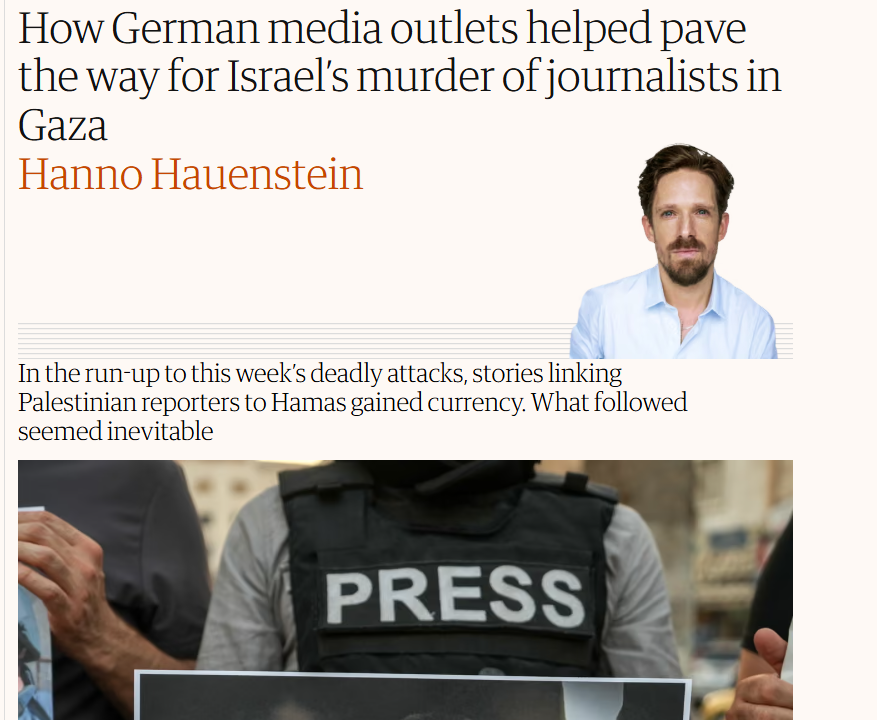
Image Credit: The Guardian
Israeli Media Strategies
| Strategy | Description |
|---|---|
| AI‑powered bots & disinformation | Flood online spaces with emotional, false narratives |
| Smearing journalists | “Legitimization cell” discredits media professionals |
| Social media influence | Military officials shape narrative via platforms |
| Viral rumors | False stories like “decapitated babies” inflame conflict |
| Act.IL app | Coordinated pro-Israel content campaigns |
| “Pallywood” narrative | Discrediting Palestinian suffering as staged |
| Psy‑ops channels | Telegram used for internal messaging warfare |
| Search engine bias | Algorithmic personalization limits viewpoint diversity |
| International media collusion | Selective coverage justifies Israeli framing |
This is not just media bias, it is a form of media warfare. Israel uses smart and planned ways to control what people see and believe. It does this through well-organized campaigns, emotional storytelling, AI tools, and social media tricks. These actions shape how people view the conflict, both inside and outside the region.
Fake videos, false headlines, and out-of-context photos flood social media. These posts are made to trigger emotions like fear, anger, or sympathy. Many people share them without checking the facts. This helps false ideas spread faster and wider.
Israel’s strategy also includes using influencers, news channels, and bots to repeat its message. This makes certain views feel more common or true, even when they are not. Some posts are made to make the other side, like Palestinians, look bad or violent. Others show only one side of the story, hiding the full truth.
In such a war, the real victim is the truth itself. When lies are repeated often, they start to feel real. This can change how people think, vote, and act. It can even affect the decisions of other countries. To fight back, people must think before they believe or share online posts. It is important to check where the news comes from. Trusted fact-checkers and honest journalists are our best defense in this battle.
The stakes are high. In a conflict like this, false media is not just noise. It can shape public opinion, push new laws, and change world views. In a time of media warfare, staying informed is not a choice, it is a duty.
You May Like To Read: Regulating the Infoscape: PECA, PTA, and Legal Responses to Information Warfare (IW16)







